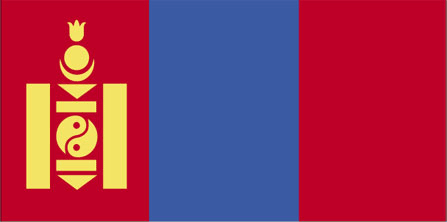To help inspire or plan your trip to Mongolia, some of its major attractions
for travellers are shown below, including some of the best natural, historical, cultural and adventure sites in the country.
These include all of UNESCO World Heritage Sites for Mongolia which represent the best
of the world's cultural and natural heritage.
Click on the icons below to focus on specific types of features
(click again to return to all).
|
|
|
|
|
|
|
|
|
|
|
|
 |
|---|---|---|---|---|---|---|---|---|---|---|---|
| Natural | History | Wildlife | Trekking | Cities | Religious Monument | Boat Journey | Rail Journey | Diving | Cultural | Adrenaline | UNESCO WHS |
Natural attractions in Mongolia
| Ger Camp in the Mongolian steppe | |
|---|---|
The highlight of any trip to Mongolia, or stopover on the Trans-Mongolian Express, is to spend a few days in the Mongolian countryside living in the traditional felt Ger tents. Three-quarters of the Mongolian population still live in gers, many of them moving nomadically several times a year. Despite this, they are very comfortable, usually housing four people and with a location that's unbeatable. Whether in the drier landscapes of the Gobi in the south or the more lush green hills and valleys of the steppes in the north, the scenery is pristine, untouched and spectacular. Mongolia is the least densely populated country on earth and the isolation is very evident - you will feel completely removed from every aspect of the modern world. The surrounding countryside is perfect for exploring on foot or on horseback. There is also the chance to meet the local herdsmen, learn about their nomadic lifestyles and perhaps have a go at their traditional sports like archery and wrestling. Mongolia offers one of the most unique, relaxing and memorable travel experiences in the world. | |
| Tuul River Valley | |
|---|---|
Northeast of Ulaan Bataar, the Tuul River flows through Terelj National Park and the Khan Khentii Protected Area. This is a region of stunning natural beauty with vast meadows, wildflowers in spring and summer, alpine forests and amazing rock formations. | |
| Khustain Nuruu National Park | |
|---|---|
Khustain Nuruu National Park, just west of Ulaan Bataar, is famous for its reintroduction of Mongolia's wild horse, or Przewalski's horse. This magnificent native Mongolian creature was once almost extinct but thanks to a unique reintroduction program by Mongolian and international organisations, they now roam free again amongst the steppes of this park. A hike in the park will allow you to see herds of these wild horses. | |
| Selenge River | |
|---|---|
The Selenge River is Mongolia's largest in terms of volume and it flows northward into Lake Baikal. The area around the Selenge River is one of Mongolia's most beautiful regions, an ideal place to stop at a ger tent and explore the picturesque surroundings. | |
| Lake Khovsgol | |
|---|---|
Lake Khovsgol is located in the north of Mongolia near the Siberian border and is perhaps the most scenic area in the country. The 2,760 square kilometre lake has clear, pure water and is surrounded by mountains and lush green forests and grasslands. Popular with tourists the area is ripe for exploration on foot or horseback, or simply relax or swim by the lakeside. | |
| Khorgo National Park | |
|---|---|
Northwest of the ancient capital of Karakorum lies Khorgo National Park, a beautifully scenic area centred around the Great White Lake, or Lake Terkhiin Tsagaan. The natural volcanic lake is surrounded by hills and the extinct Khorgo volcano. Hikes to the top of these peaks offer stunning views of a dramatic landscape. | |
| Gobi Desert | |
|---|---|
The Gobi Desert region in southern Mongolia is home to some of the country's most dramatic landscapes. Within the Gobi Gurvansaikhan National Park, Yolyn Am is a spectacular gorge, 20km long and so narrow and deep (with cliff faces up to 200 metres) that there is permanent ice on the valley floor. The area is renowned for its wildlife with opportunities to see endangered animals such as Siberian ibex, Argali sheep and snow leopard. North of here lies Bayanzag, known as Flaming Sands due to the colours of the red, yellow and orange sands at sunset and sunrise. This region is a famous dinosaur fossil exploration site. Elsewhere in the Gobi, the Khongoriin Els sand dunes are Mongolia's largest, up to 200 metres in size, and known as the 'Singing Sand Dunes' due to the sounds that resonate through them on windy days. | |
| Uvs Nuur Basin | |
|---|---|
The Uvs Nuur Basin is located in western Mongolia and across the border in Russia. It covers over ten thousand km² and is the northernmost of the enclosed basins of central Asia. It's an important ecosystem for wildlife, with the Uvs Nuur Lake frequented by sea birds and migratory birds, and the mountains a home for the endangered snow leopard, Asiatic ibex and Argali sheep. UNESCO World Heritage Site: Uvs Nuur Basin | |


